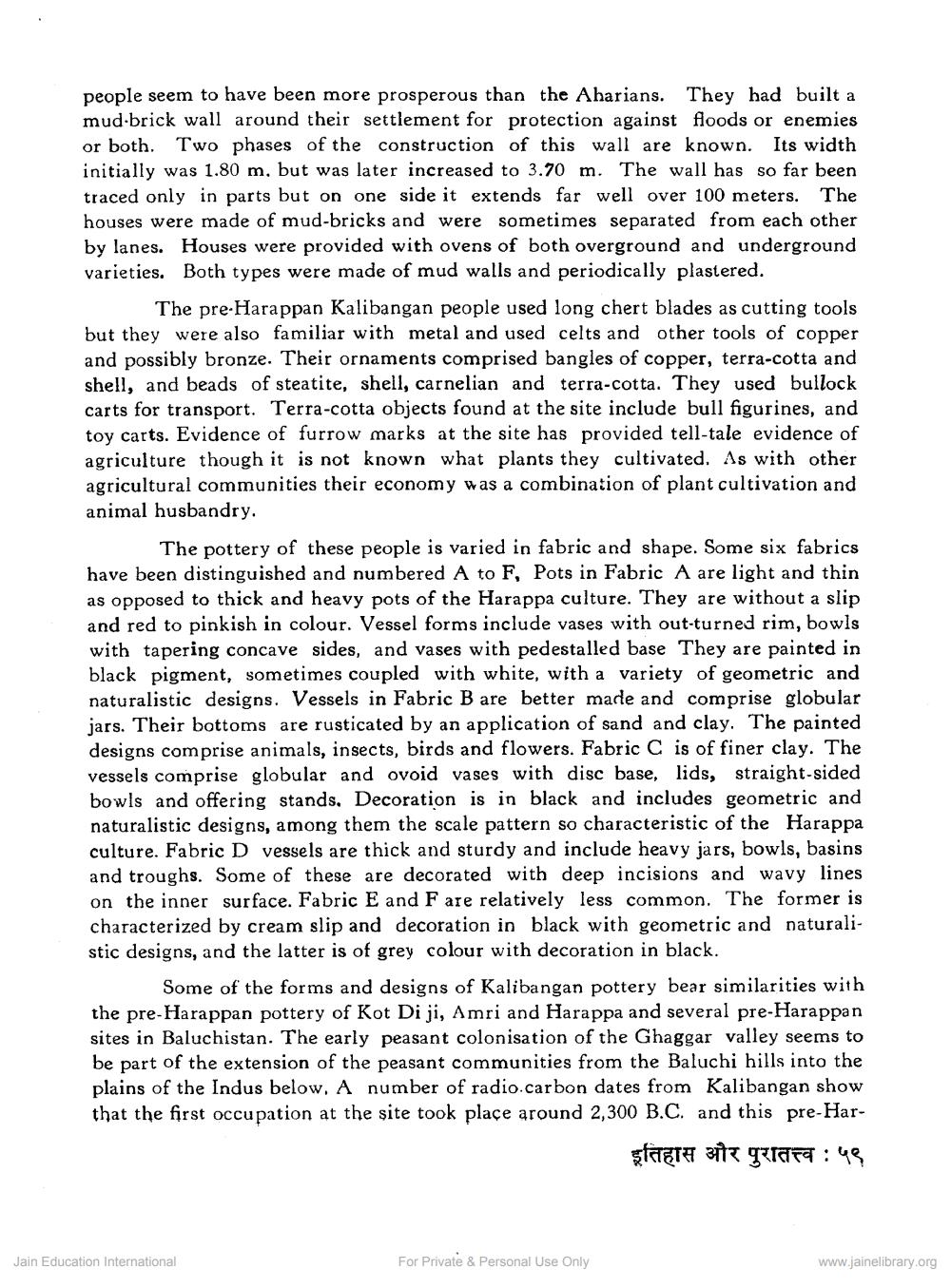________________
They had built a floods or enemies
people seem to have been more prosperous than the Aharians. mud-brick wall around their settlement for protection against or both. Two phases of the construction of this wall are known. Its width initially was 1.80 m. but was later increased to 3.70 m. The wall has so far been traced only in parts but on one side it extends far well over 100 meters. The houses were made of mud-bricks and were sometimes separated from each other by lanes. Houses were provided with ovens of both overground and underground varieties. Both types were made of mud walls and periodically plastered.
The pre-Harappan Kalibangan people used long chert blades as cutting tools but they were also familiar with metal and used celts and other tools of copper and possibly bronze. Their ornaments comprised bangles of copper, terra-cotta and shell, and beads of steatite, shell, carnelian and terra-cotta. They used bullock carts for transport. Terra-cotta objects found at the site include bull figurines, and toy carts. Evidence of furrow marks at the site has provided tell-tale evidence of agriculture though it is not known what plants they cultivated. As with other agricultural communities their economy was a combination of plant cultivation and animal husbandry.
The pottery of these people is varied in fabric and shape. Some six fabrics have been distinguished and numbered A to F, Pots in Fabric A are light and thin as opposed to thick and heavy pots of the Harappa culture. They are without a slip and red to pinkish in colour. Vessel forms include vases with out-turned rim, bowls with tapering concave sides, and vases with pedestalled base They are painted in black pigment, sometimes coupled with white, with a variety of geometric and naturalistic designs. Vessels in Fabric B are better made and comprise globular jars. Their bottoms are rusticated by an application of sand and clay. The painted designs comprise animals, insects, birds and flowers. Fabric C is of finer clay. The vessels comprise globular and ovoid vases with disc base, lids, straight-sided bowls and offering stands. Decoration is in black and includes geometric and naturalistic designs, among them the scale pattern so characteristic of the Harappa culture. Fabric D vessels are thick and sturdy and include heavy jars, bowls, basins and troughs. Some of these are decorated with deep incisions and wavy lines on the inner surface. Fabric E and F are relatively less common. The former is characterized by cream slip and decoration in black with geometric and naturalistic designs, and the latter is of grey colour with decoration in black.
Some of the forms and designs of Kalibangan pottery bear similarities with the pre-Harappan pottery of Kot Di ji, Amri and Harappa and several pre-Harappan sites in Baluchistan. The early peasant colonisation of the Ghaggar valley seems to be part of the extension of the peasant communities from the Baluchi hills into the plains of the Indus below. A number of radio carbon dates from Kalibangan show that the first occupation at the site took place around 2,300 B.C. and this pre-Har
इतिहास और पुरातत्त्व: ५९
Jain Education International
For Private & Personal Use Only
www.jainelibrary.org




